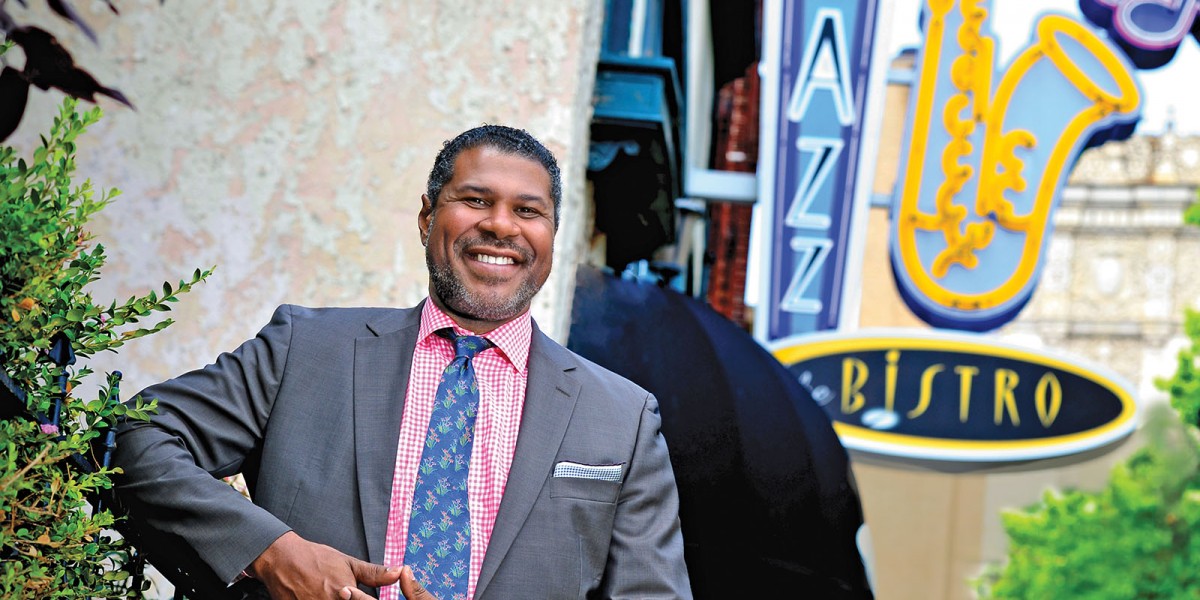Actor Alex Puette didn’t know what hit him. On cue for his first entrance, he walked out of his dressing room. Being smacked in the face by a wild, flying duck en route to the stage appeared nowhere in the script. But that’s show business at The Muny.
Not to worry, according to Muny company manager Sue Greenberg, both Puette and the duck survived the encounter. Puette performed in 90 Years of Muny Magic that night, and the duck found refuge in a nearby pond. Greenberg says something unpredictable happens every day during the summer Muny season, and that’s part of the allure of working at the oldest and largest outdoor theater in the country.
Greenberg, AB ’76, happens to be one of many university alumni who enjoy a behind-the-scenes view of some of the most popular and storied arts and cultural organizations in the St. Louis region. Here, 13 impact players discuss their roles at the Saint Louis Art Museum, Saint Louis Zoo, Fox Theatre, Black Rep and more, as well as how they help keep these cultural giants running.
Gene Dobbs Bradford, EMBA ’08
Executive Director, Jazz St. Louis
How would you describe your role at Jazz St. Louis?
As executive director, I set the tone and vision for Jazz St. Louis, which presents jazz concerts at the newly remodeled Jazz at the Bistro. I also oversee Jazz St. Louis’ education and outreach programs, which involve more than 11,000 students annually. The Emerson Jazz in the Schools program, for example, exposes young people to jazz music by bringing artists who play at the Bistro to perform at schools throughout the metropolitan area.
What do you like most about working here?
… meeting some of my musical inspirations, such as Sonny Rollins, and exposing the next generation of listeners to the wonders of jazz.
What made you want to work behind the scenes?
Though I was trained as a classical musician, I saw early on that my future lay on the business side of music. I realized that if I were the person initiating the events, I could be more creative than if I were sitting in the bass section.
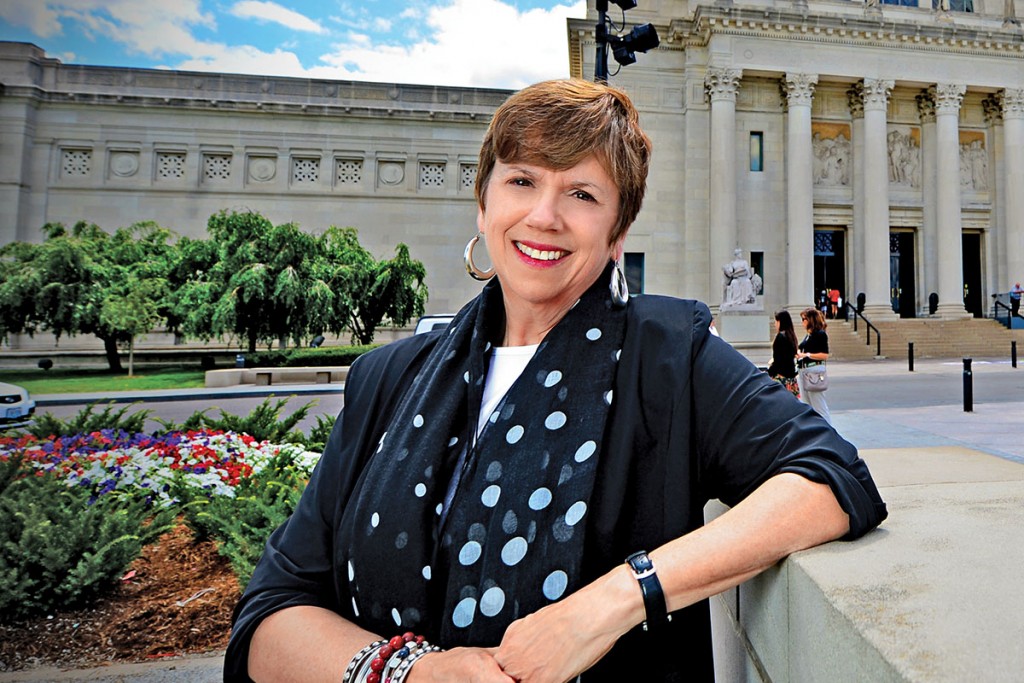
Judith Mann, MA ’78, PhD ’86
Curator, European Art to 1800, Saint Louis Art Museum
How would you describe your role at the Saint Louis Art Museum?
I am the curator for European Art to 1800; I oversee the Medieval and Old Master Collections of sculpture and painting.
What do you like most about working here?
I love the opportunity to make a contribution to the cultural experience of St. Louisans. I have been fortunate to organize two large international loan exhibitions — Orazio and Artemisia Gentileschi: Father and Daughter Painters in Baroque Italy (2002) and Federico Barocci: Renaissance Master (2012-13) — that I felt had an impact on people, teaching them about artists they had never heard of … and enriching and expanding their life experiences.
Where do you see the greatest potential for enhancing arts and culture in the St. Louis Region?
Increased collaboration holds the greatest potential for advancing and developing arts and culture in St. Louis. We have the makings for a great art center: exciting things happening at Washington University, a new building and expanded programming for the Saint Louis Art Museum, renovations at Grand Center, an expanding Pulitzer Foundation, the renovations happening on the Arch grounds and downtown, new galleries, Gallery 210 at UMSL, Laumeier, a variety of theater experiences and Opera Theatre of St. Louis. We need to concentrate on building in opportunities to communicate and work together.
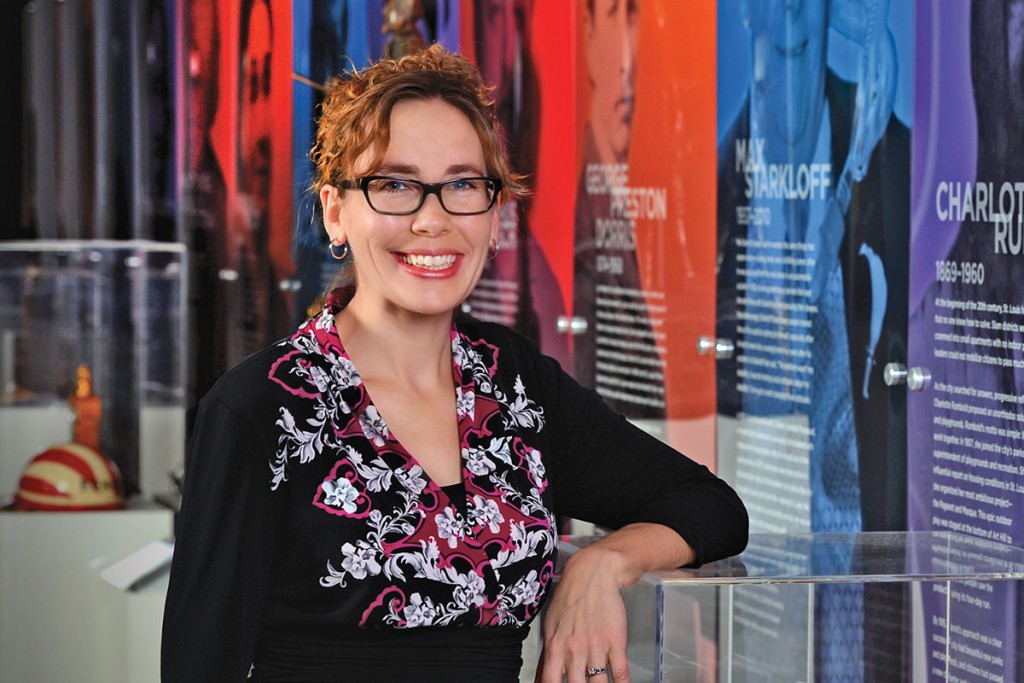
Katherine Van Allen, AB ’01
Managing Director of Museum Services, Missouri History Museum
How would you describe your role at the Missouri History Museum?
As managing director of Museum Services, I’m responsible for our Exhibitions and Research, Library and Collections, Publications and Digital Initiatives divisions.
What might others find most surprising about the organization?
I think people are often surprised by how relevant we are. We are in the business of sharing the past, but we also work hard to bring the topics we cover into our present-day reality. For example, we had a number of shows covering various aspects
of immigration, which provided a link between the history of immigration in our region to the issues we face today.
Where do you see the greatest potential for enhancing arts and culture?
Collaboration. Countless organizations are involved in engaging the community in meaningful ways, yet we truly can be at our most creative and effective through partnerships. The more we can build upon those relationships, the more positive benefits we will see for the entire region.
What was most rewarding about the 250 in 250 exhibit last year?
The most rewarding part by far was to see how this exhibit engaged our visitors and the overall community. Halfway through the exhibit’s run in 2014, we had surpassed overall attendance numbers for the entire year in 2013. It was our most well-attended temporary exhibit in over 75 years.
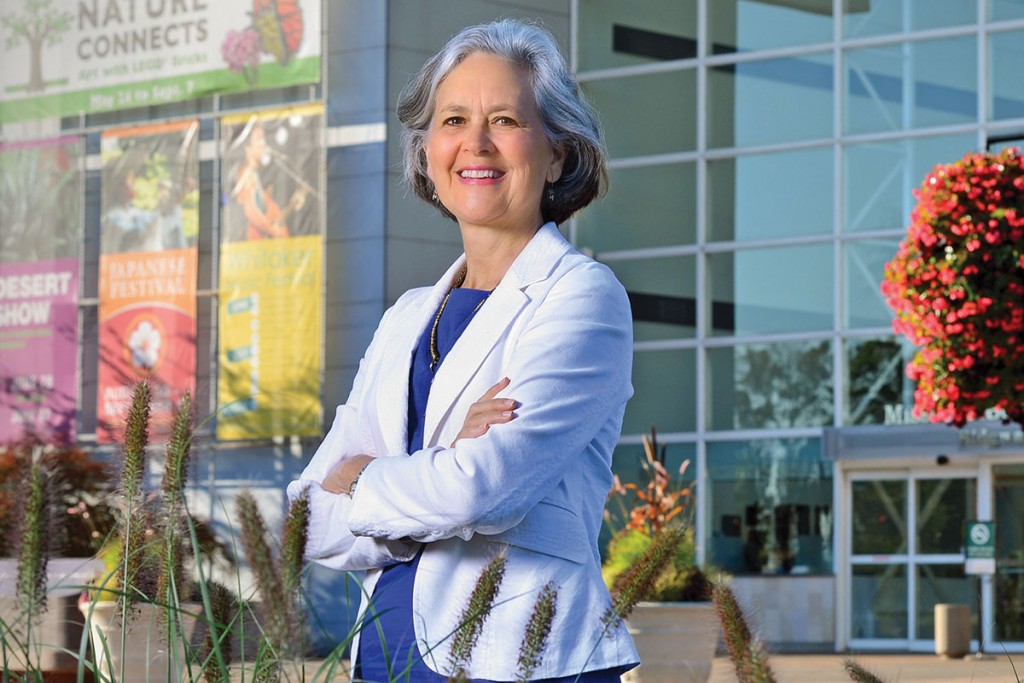
(Photo: James Byard)
Deborah Frank, MA ’79
Vice President, Sustainability, Missouri Botanical Garden
How would you describe your role at the Missouri Botanical Garden?
I am charged with incorporating sustainable practices into all Missouri Botanical Garden operations, engaging members of the local community to incorporate green principles and practices where they live, work and play — and to assist in advancing regional sustainability initiatives. … I oversee the EarthWays Center, a division of the garden that promotes sustainability through environmental education and improving the built environment.
What do you like most about working here?
… the opportunities to share the importance of, and our reliance on, plants and the natural world — and to show how the choices we make and actions we take every day can help protect our Earth’s ecosystems, on which our existence depends, here and around the world.
What might others find most surprising about the organization?
The important legacy of Henry Shaw! He made his fortune here in the early days of St. Louis, and then he invested his fortune back into the city through the Missouri Botanical Garden, Tower Grove Park, Washington University and other institutions.
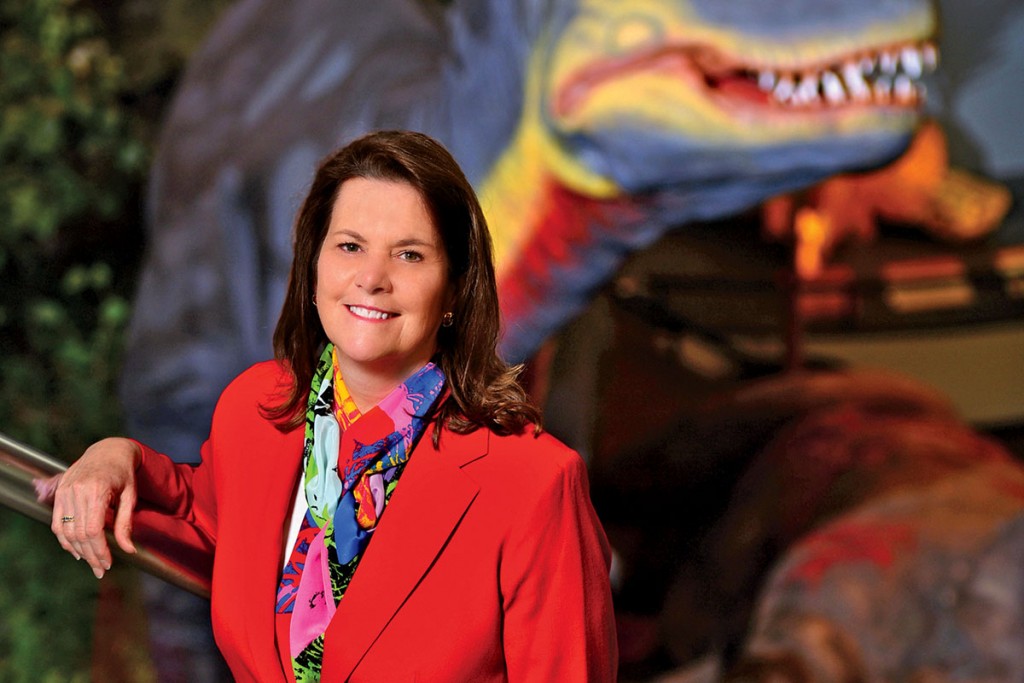
Barbara Boyle, BSBA ’79
Chief Operating and Financial Officer, Saint Louis Science Center
How would you describe your role at the Saint Louis Science Center?
My overall responsibilities include business operations, staffing, and administrative and reporting procedures that support the Saint Louis Science Center’s mission to ignite and sustain lifelong science and technology learning.
How did your organization celebrate the city’s 250th anniversary?
We partnered with the organization stl250 on a variety of events throughout the year. One 2014 First Friday, STL 2264, was themed around the St. Louis of the future — specifically, 250 years in the future. We looked at how technology may change the city.
Where do you see the greatest potential for enhancing arts and culture?
We believe the Saint Louis Science Center, along with other institutions, should promote creativity and creative thinking as essential elements that lead to discovery and innovation. There is great potential to increase access to this creative process through collaborations among the broad community of visual artists, game developers, traditional crafters, programmers, musicians, scientists and others. Formal and informal partnerships could supplement school curricula and help spark this interest at an early age, to enrich our region for generations to come.
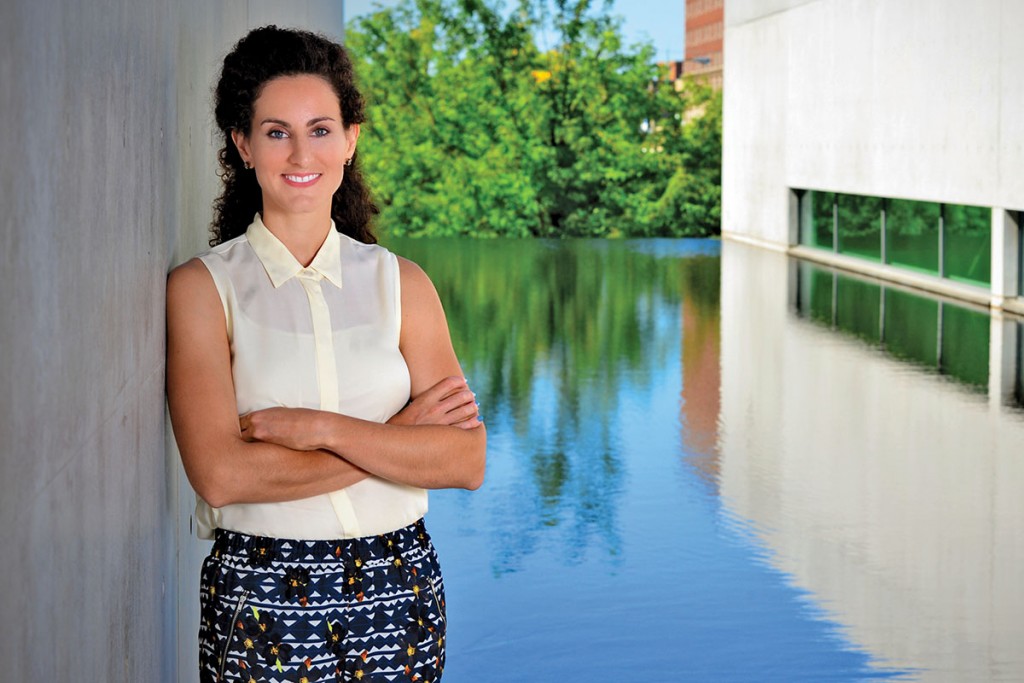
Kristin F. Brewer, MFA ’11
Manager of Programs, Pulitzer Arts Foundation
How would you describe your role at Pulitzer Arts Foundation?
As head of the programming department, I am responsible for the strategy, creation and implementation of the Pulitzer’s public programs and community engagement.
What do you like most about working here?
I love the relationships I have been able to build through Pulitzer collaborations, which give me a greater sense of connection to the city and a deeper understanding of the dynamic and diverse people who make up St. Louis.
Where do you see the greatest potential for enhancing arts and culture?
The greatest potential for enhancing arts and culture is in our neighborhoods and in the education system. So many of the -problems facing St. Louis require artistic thinking and creative problem solving. We need to enhance this type of thinking in our education system, as well as in rethinking structural issues.
The most powerful work I see in St. Louis is art fostered on a neighborhood scale; examples include City Faces, Blank Space and The Pink House.
I also advocate for placing artists and creative thinkers in alternative positions. The city of St. Louis should have an artist-in-residence or designer-in-residence to help with strategy and out-of-the-box thinking.
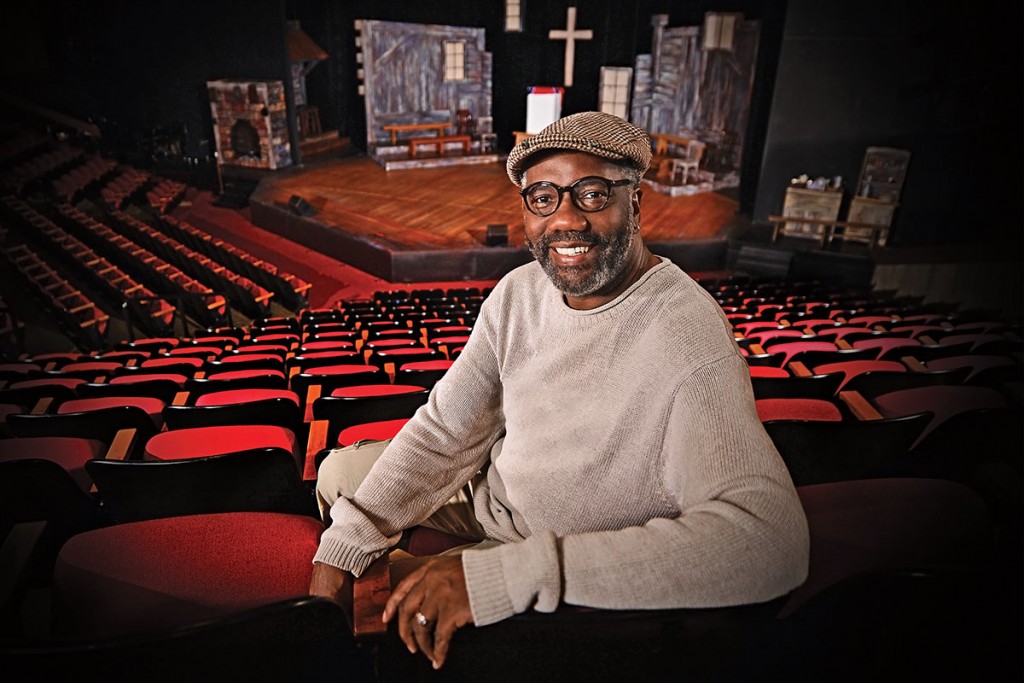
Ron Himes, BSBA ’78, Honorary PhD ’98
Founder and Directing Producer, The Black Repertory Theatre
The Henry E. Hampton Jr. Artist-in-Residence, Performing Arts Department, Washington University
How did the Black Rep start?
When I was an undergrad here [at WashU], a group of us started a student company, primarily because we didn’t feel that African-American students in the theater department were getting enough opportunities. The Black Rep grew out of that, incorporating as the St. Louis Black Repertory Company in 1976.
What have you liked most about leading this pivotal organization?
One of my favorite things is introducing young African-American students to the theater and providing them an opportunity to train, develop and realize that they have the theater as an option.
Did last season speak to community issues in St. Louis?
I think what we experienced last summer was not an isolated incident, but a heightened incident. I think historically and consistently the work we do speaks … to issues that are current and relevant, and our programming has been set up in hopes of stimulating and facilitating dialogue around these issues.
What might others find most interesting about the organization?
We consider ourselves to be a major part of the fabric of the cultural landscape, yet the void that we came into being to fill is still there. We continue to work to fill it.
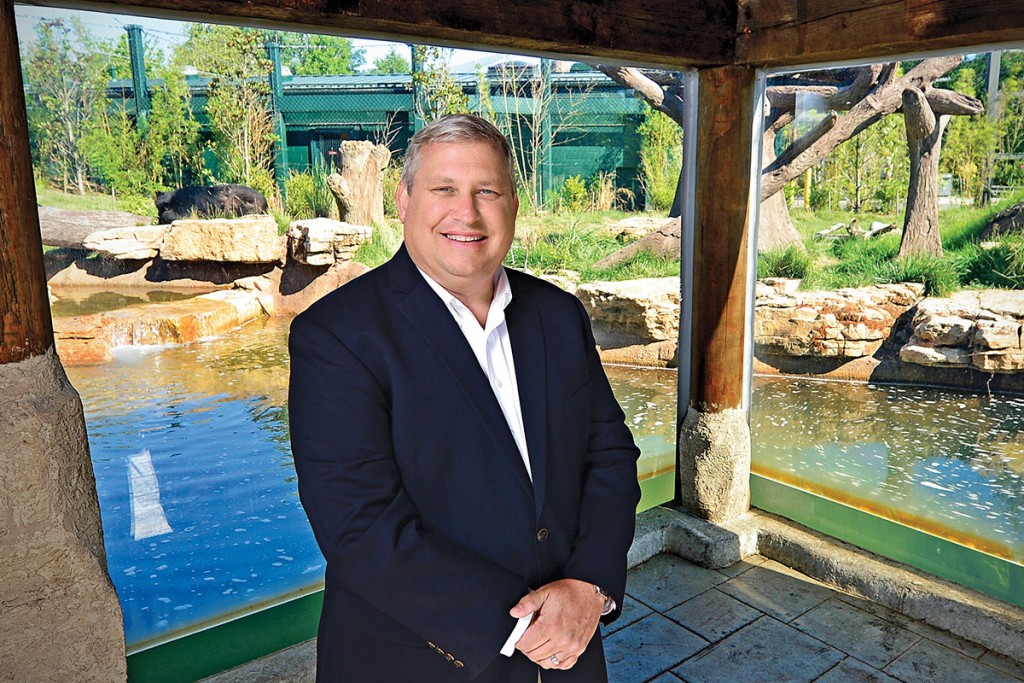
David McGuire, AIA, BT ’89
The William Bernoudy Vice President, Architecture and Planning, Saint Louis Zoo
How would you describe your role at the Saint Louis Zoo?
My primary function includes serving as the zoo’s chief architect, responsible for design and long-range planning. I coordinate the selection process and manage all the design, engineering and construction management professionals, while overseeing bidding and construction.
What do you like most about working here?
It’s the thrill of connecting people with animals; working on a diverse range of projects; building camaraderie with talented curators, researchers and biologists; and having the chance on a daily basis to observe some of the most fascinating endangered species on the planet. Mostly, though, I enjoy the opportunity to give back to my community by serving at a revered St. Louis cultural organization.
What might others find most amazing about the organization?
The most amazing thing about the zoo is the length to which everyone here will go to provide the very best care for the animals. This sometimes makes things challenging for the design professionals with whom we collaborate, but the end result makes our zoo a model for others to emulate.
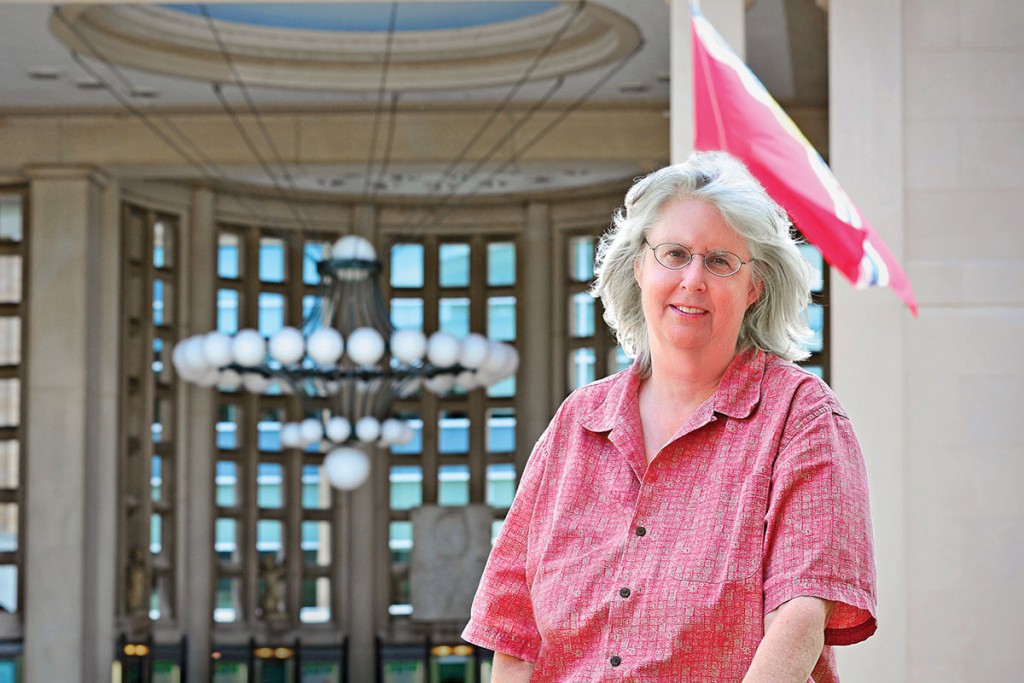
Sue Greenberg, AB ’76
Company Manager, The Muny
How would you describe your role at The Muny?
Company management is all about logistics, including housing, travel and many other details not directly related to rehearsing and performing the shows. Working at The Muny is my summer job. During the winter, I’m the part-time executive director of St. Louis Volunteer Lawyers and Accountants for the Arts.
What do you like most about working here?
It’s a privilege to work at such a beloved institution and with people who love what they do. And Forest Park is the best lunchroom in St. Louis.
Where do you see the greatest potential for enhancing arts and culture?
I see the most potential in our growing population of tenacious individual artists. They are the dancers, musicians, actors, writers, filmmakers, designers and visual artists who entertain, educate and challenge us to think bigger thoughts. As a community, we’re doing more (but not enough) to attract and retain them. My favorite examples include the Cherokee district, a haven for artists and an inspiring example of diverse, urban renewal; the Regional Arts Commission’s new fellowship and artist support grant program; the St. Lou Fringe Festival; the renovation of the historic downtown Arcade Building, with 202 affordable artist lofts; and the multivenue Hands Up, Don’t Shoot: Artists Respond exhibition, featuring works by more than 100 visual artists.
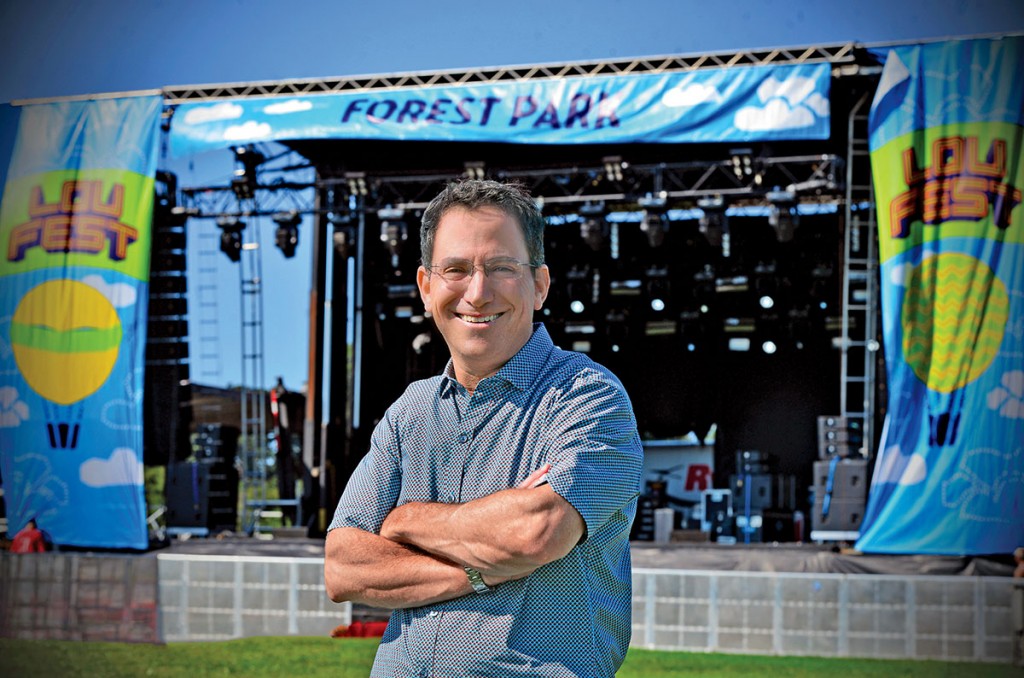
Brian Cohen, MA ’07
Founder, LouFest
Media Specialist, Department of Education, Washington University
How would you describe your role at LouFest?
In 2013, we partnered with C3 Presents, the company behind Lollapalooza, for the first time to help us grow the event. Many duties shifted to them, so my main focus going forward is on strategic growth and making sure the event stays firmly rooted in the local culture.
What might others find most surprising about the festival?
… how comfortable it feels. Even with 20,000 people, there’s plenty of room to spread out with a blanket when you want a break from the crowds. Many also find it surprising that LouFest is so multifaceted. Music is at the heart of what we do, but there’s so much more, including great local restaurants, cool local artists and retailers, and an amazing area for kids. Our mission is to bring together people of different ages, races and lifestyles, so they can all share in a common experience.
Where do you see the greatest potential for enhancing arts and culture?
The greatest potential is in our people. Giving more of them tools to participate in the creative life of the city will expand the range of arts and culture for all of us. St. Louis has developed into a hub for bio and tech entrepreneurship. I would love to see similar support extended to the producers of arts and culture as well.
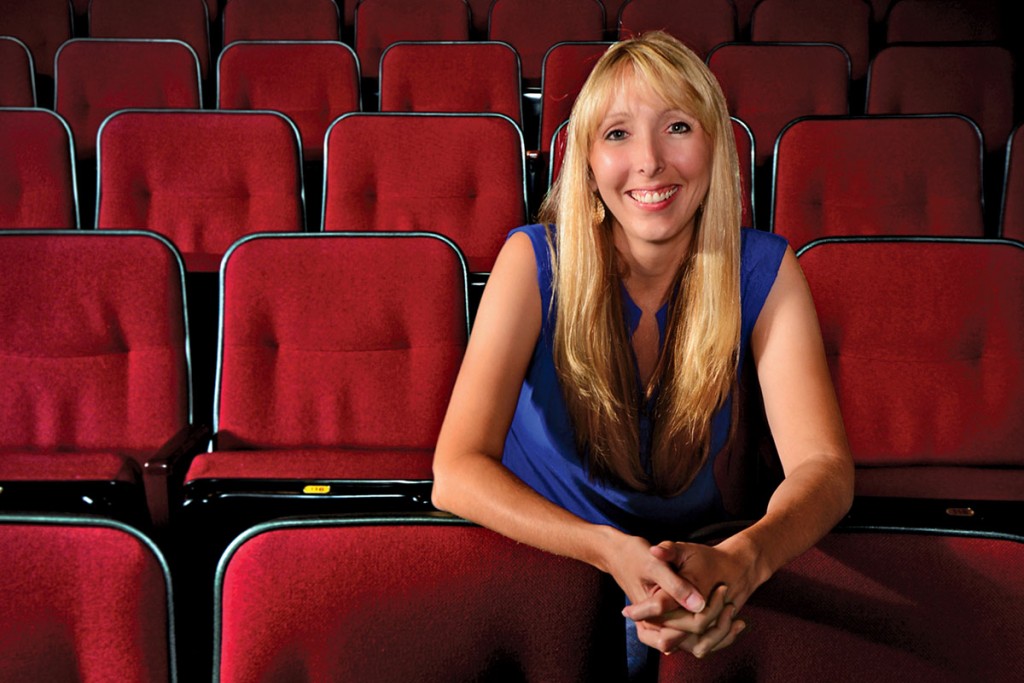
Sarah Brandt, AB ’01
Associate Director of Education and Publications Manager, The Repertory Theatre of St. Louis
How would you describe your role at The Repertory Theatre of St. Louis?
My department offers dozens of programs that enrich the theater experience for our patrons. I oversee publications, including study guides, newsletters and education displays, that provide a wealth of background information on each show.
The education department also oversees The Rep’s Imaginary Theatre Company (ITC), which is our professional touring ensemble for young audiences. Each season ITC travels all over Missouri and Illinois to bring theater to kids in grades K–6. I also have been commissioned to write several plays that have premiered as part of ITC and gone on to other theaters around the world.
What do you like most about working here?
There is a lot to love at The Rep. The work on stage is top notch, but The Rep is also dedicated to helping the community in lots of different ways, including staffing events to support St. Louis Effort for AIDS, Operation Food Search and Voices for Children. Everyone at The Rep takes part in making St. Louis a great place to live and work.
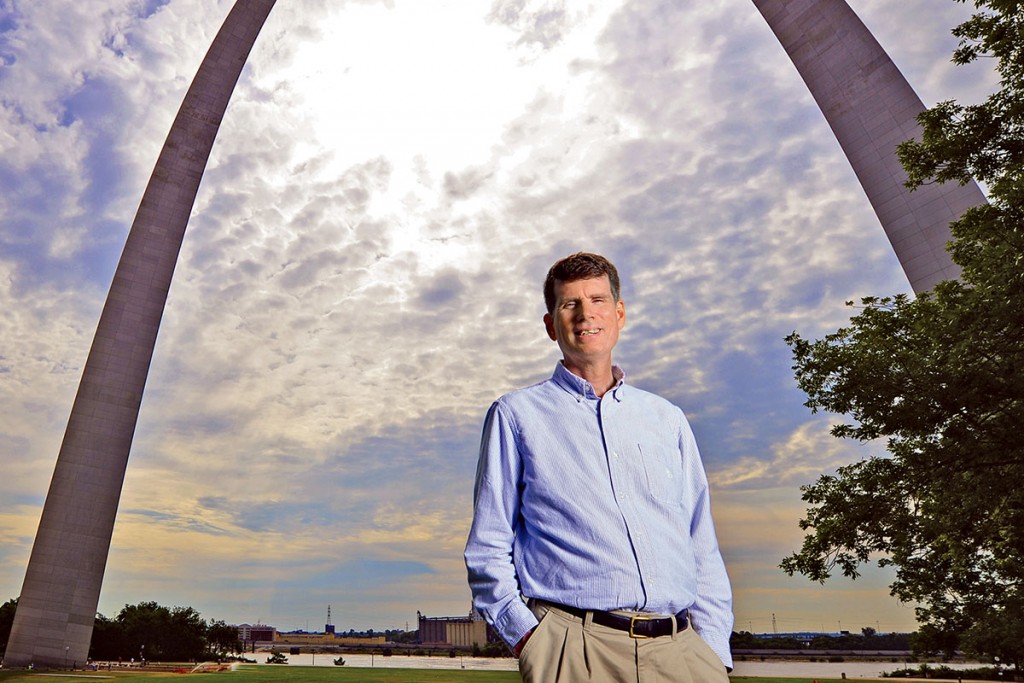
(Photo: James Byard)
Robert Moore, MA ’96, PhD ’03
Park Historian, Jefferson National Expansion Memorial
How would you describe your role at the Jefferson National Expansion Memorial?
I am the historian … currently the point person on the complete reimagining of the park’s exhibit spaces under the Arch and in the Old Courthouse, totaling roughly 32,000 square feet.
What do you like most about working here?
I think the most rewarding aspect of the job has been the opportunity to meet and interview some of the designers and workers who made the Arch a reality. Every oral history interview I have done has been illuminating and special in some way. The workers who braved extreme heights on a curving, wobbly structure (until the final piece was put in place) have incredible and sometimes very funny stories to tell.
What might others find most surprising about the organization?
We have to get everything accurate, because if we don’t, people spot it very quickly. You can’t have 2.5 million visitors a year without a percentage knowing as much, if not more, than you do about a particular subject. So the text in the exhibits has to be correct, and the balance of the story has to be right. You can’t deal with the nation’s two original sins — slavery and the treatment of the American Indian — as we do and tell a biased story.
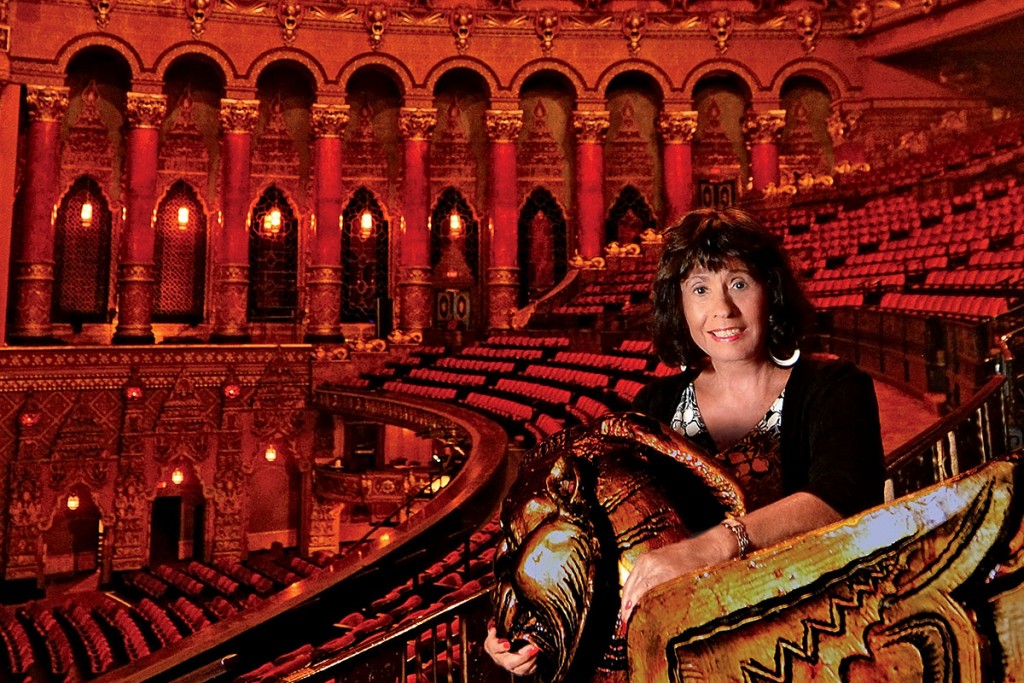
How would you describe your role at Fox Associates?
I am co-owner of Fox Associates, which includes the Fox Theatre, Fox Event Services, Fox Concerts and MetroTix in St. Louis.
What was your role in restoring the Fox Theatre?
I served as the director of restoration for the grand reopening of the Fox in 1982. I have continued to work with the staff to ensure the Fox remains the premier theatrical venue in St. Louis.
How would you describe the Fox’s significance on the city’s landscape?
With the return of the Fox, national touring shows, which had previously skipped St. Louis for lack of an appropriate venue, returned. St. Louis was again a viable destination for touring shows and concerts, so the Fox acted as a catalyst for opening Riverport, the Pageant and other performance venues. The Fox is also proud to have played a major role in the revitalization of Grand Center, St. Louis’ arts and entertainment district.
Where do you see the greatest potential for enhancing arts and culture?
The greatest potential is in our ability to engage young people. I am very proud of our contributions through the Fox Performing Arts Charitable Foundation, whose mission is to foster, promote and encourage young people in the region to discover and participate in the joy and wonder of live performances. Exposing young people to the arts helps not only to mold future artists, but also to create the foundation for future audiences.
